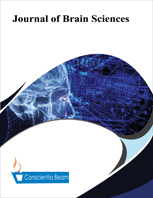Constructing a graphical representation of the brain from functional MRI
DOI:
https://doi.org/10.18488/83.v6i1.3582Abstract
This study aims to investigate alterations in brain connectivity, specifically within the Resting State Network (RSN), among adolescents with major depressive disorder (MDD) compared to well-matched healthy controls. Employing functional Magnetic Resonance Imaging (fMRI), the research focuses on using two statistical approaches, namely Pearson Product-Moment Correlation Coefficient (PPMCC) and Mutual Information (MI), to discern changes in connectivity patterns. Resting state fMRI data from 102 adolescents diagnosed with MDD and 34 healthy controls were analyzed. The study utilized PPMCC and MI to assess correlations between different brain regions within the RSN. The investigation scrutinized whether these statistical approaches yield consistent results and explored their efficacy in detecting alterations in brain connectivity associated with depression. While PPMCC analysis revealed no significant differences between any brain regions, MI analysis demonstrated substantial changes in the connectivity of 39 specific brain regions. The study underscores the sensitivity and robustness of the MI technique, establishing it as a more effective method for discerning connectivity variations associated with major depressive disorder. The findings emphasize the importance of selecting appropriate statistical methods in neuroimaging studies. The application of MI in analyzing resting state fMRI data proves to be a valuable tool for identifying nuanced alterations in brain connectivity associated with depression. This insight contributes to refining diagnostic approaches and potentially informs the development of targeted interventions for adolescents with major depressive disorder.

